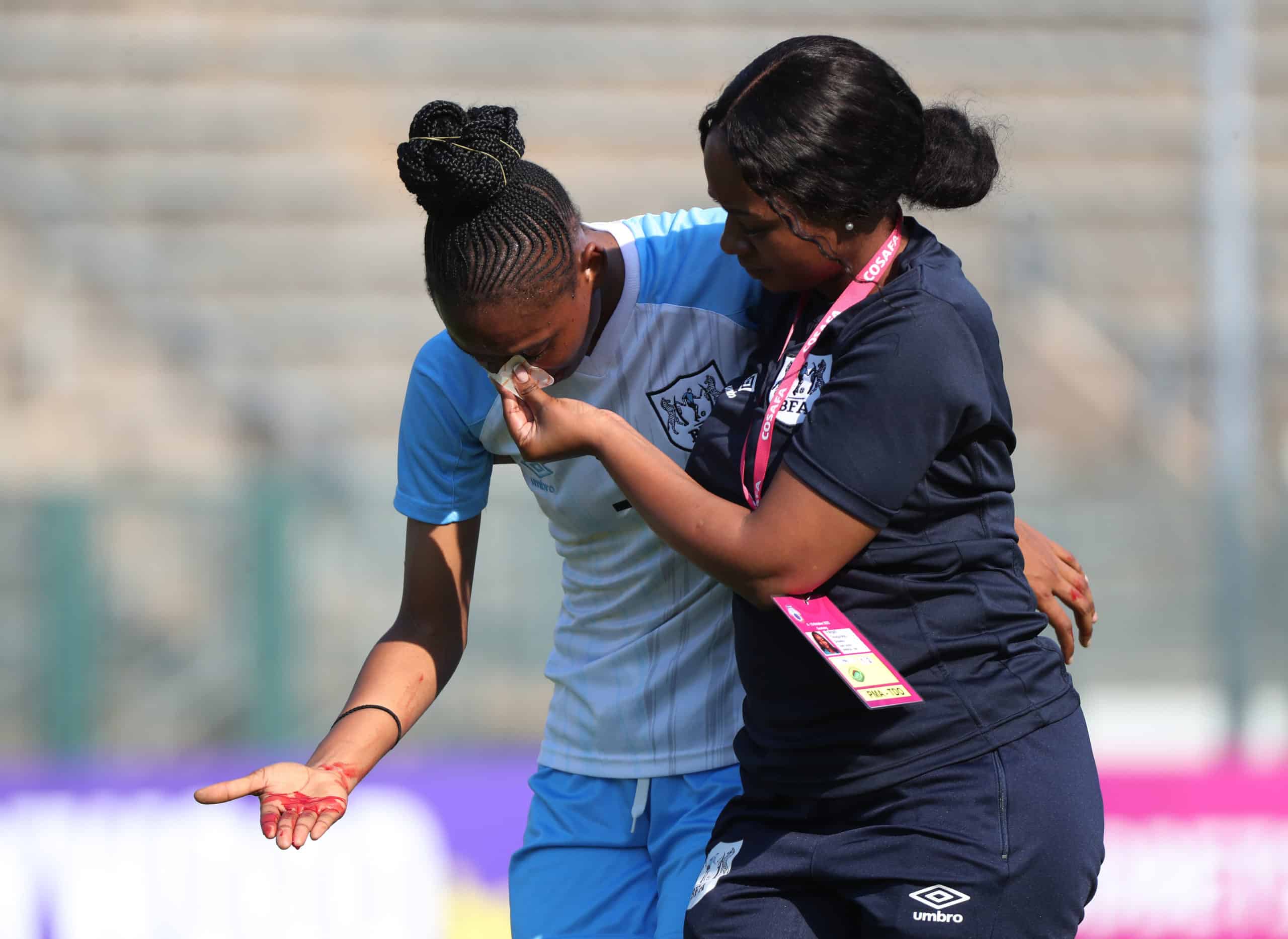Zimbabwean physiotherapist Dr Nonhlanhla Mkumbuzi is working to understand how injuries can affect female African players particularly, and how this might differ to those of athletes overseas.
Football may be played to the same rules the world over, but the game differs wildly from continent to continent in style and substance, and most certainly when it comes to the types of injuries sustained by players.
Understanding this is important, because it not only points to the treatment of injuries, but perhaps more crucially, how clubs and national teams can prevent them occurring in the first place.

Zimbabwean Dr Nonhlanhla Mkumbuzi is a sports physiotherapist and has a Ph.D. in Exercise Science, and is striving to understand how female African players, in particular, are affected by injuries, and how this might differ from a player in England or the United States (U.S.).
Mkumbuzi has an impressive CV, she is a lecturer in the Department of Sports, Exercise and Rehabilitation at Northumbria University in the United Kingdom and is editor of the British Journal of Sports Medicine. She is also a research associate at the Department of Human Movement Science at the Nelson Mandela University in Gqeberha, South Africa.
Loading...
So, there is no better person to tackle this subject.
“We have been conducting research on female African football players since 2020 because there is simply not a lot of information out there,” Mkumbuzi tells FORBES AFRICA. “In fact, there is not a lot of research on female athletes worldwide in general.
“The decisions we are therefore making for our female football players is largely based on data from the men’s game. You could ask why it matters, football is football, but men and women are inherently different.
“To go further, women in Zimbabwe are different from women in New Zealand or Panama, so we can’t just cut and paste data from one group of people to another and hope for the best. That does not lead to very good outcomes.
“We want to develop rich data that comes from African women football players that can be used to help other female African players, assisting with things like training, injury prevention, the menstrual cycle and so on.”
The very high prevalence of crippling ACL (anterior cruciate ligament) injuries in Europe and the U.S. is not seemingly replicated in Africa on the same scale. On this continent, it is the ankles that suffer. “Generally, the trends show female athletes in general are at increased risk of getting ACL injuries versus males,” Mkumbuzi says. “Some studies suggest females are eight times more likely to pick up these types of injuries. But that is not so much the case in Africa.
“There could be many reasons, including under-reporting, or the fact that players don’t
have the money to get an MRI scan to diagnose the injury, and we just call it a general knee injury.
“The fixture list is also not as congested in Africa as it is in the developed world, so our players are not playing every three or so days like they do in Europe and the U.S.
“The data we have collected in the last three years shows we have had more ankle injuries, so it would make sense for us to create injury prevention strategies for those instead.”
The research covers several other subjects, all with an aim of providing information to clubs and member associations on where to invest in ensuring the comfort and safety of female players on the continent, providing African solutions to African problems.
Mkumbuzi admits that funding for the research is “ad hoc and tenuous at best” but intends to continue as long as she can, having recently provided recommendations based on player interviews on how to best manage the sensitive topic of the menstrual cycle.
A total of 281 footballers from 11 countries were interviewed to understand the shortcomings in current policy and facilities available to players, with the hope that it can effect change. For Mkumbuzi, it is the continuation of a life-long passion to marry sports and science.
“I decided I was going to be a sports physiotherapist in 2002. I was watching the (men’s) World Cup in South Korea and Japan. I think Brazil was playing someone, and I just decided I was going to be that person who runs onto the field when people are injured. The word physiotherapist was not even in my vocabulary back then.
“I have spent most of my adult like on a sports field in one capacity or other, and hope that through this research we can shine a spotlight on the issues facing African female footballers specifically and develop plans to help them. “This is not just research for players, but for national associations too so that when they are putting together budgets for their women’s teams, they can provide adequate support in all these areas.”
Loading...
